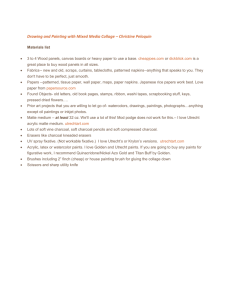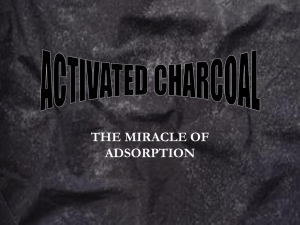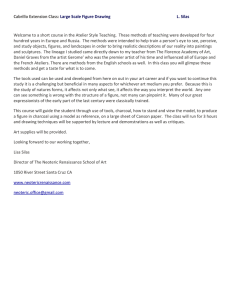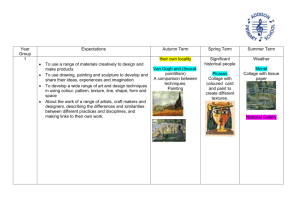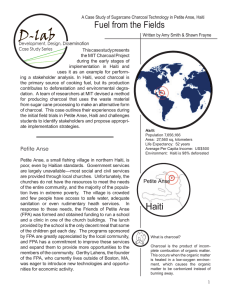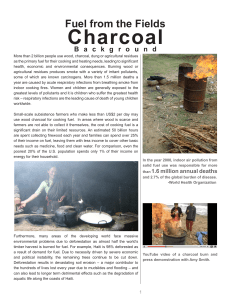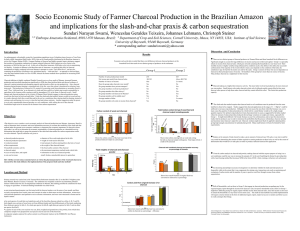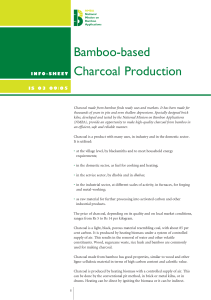HST.939 Designing and Sustaining Technology Innovation for Global Health Practice
advertisement
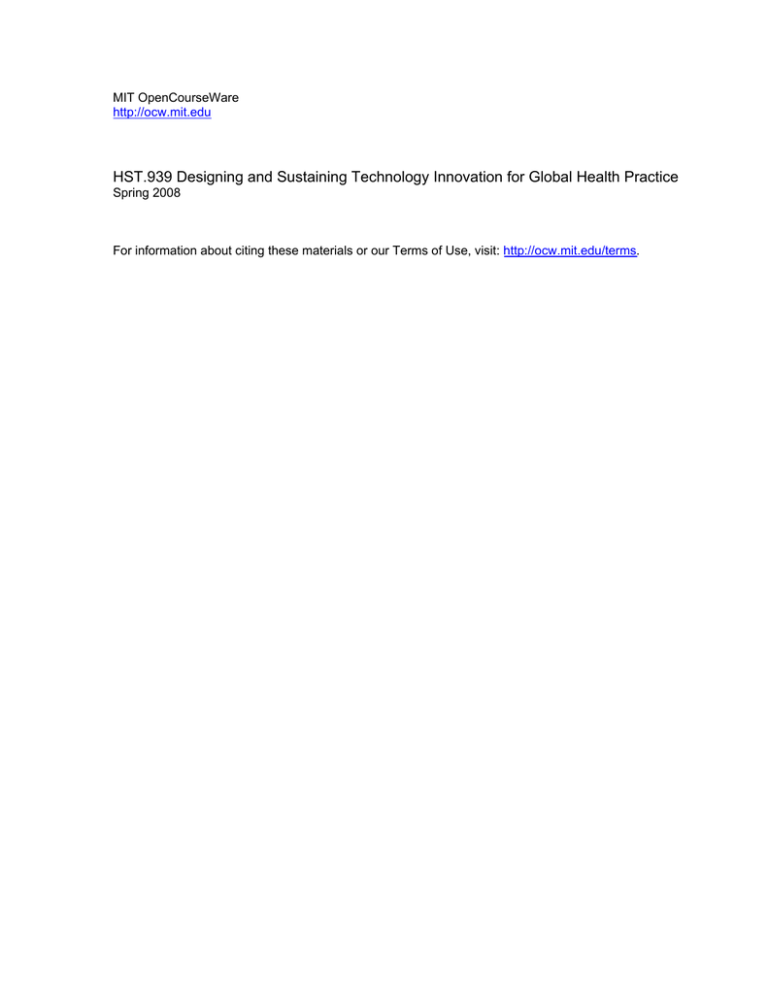
MIT OpenCourseWare http://ocw.mit.edu HST.939 Designing and Sustaining Technology Innovation for Global Health Practice Spring 2008 For information about citing these materials or our Terms of Use, visit: http://ocw.mit.edu/terms. HST.939 Designing and Sustaining Technology Innovation for Global Health Practice Spring 2008 Notes taken for OCW by student Lecture 6: 3/11/08 By George Whitesides “Simple Solutions”: Zero-Cost Diagnostics Goal is to develop a zero-cost solution - does this fit in a capitalist business model? No Systems approaches: Macroscopic systems view: Manufacture Æ package Æ transport Æ distribute Æ use Specific systems approach for diagnostics: Patient Æ sample Æ preparation Æ introduction Æ readout Æ analysis Æ interpretation Æ action With small volumes of samples, you need microfluidics (e.g. Quake’s PET synthesizer) – high-level technology Clinical labs on paper: prick finger Æ squeeze blood onto filter paper Æ plasma (with liver function tests) Æ digitize results (i.e., take a picture of the results with a camera phone, send to a computer for analysis - can we make that type of filter paper for free? What is the business model? What are some of the problems that need to be dealt with? - “zero cost” does not fit the capitalist model - Customer is ill-defined - Technology is only part of the problem: what is the product? Systems! - Relation to developed world: cost reduction, prevention, chronic monitoring, service model. Objective: develop a simple method for quantifying colorimetric assays in paper Our approach: replace the spectrophotometic ELISA with the “POCKET” device (“portable and cost-effective”) Microfluidic devices in paper: needs/goals for the future: - large-scale manufacturing - disposable - easy to stack and transport Biological systems prove that there *are* long-term storage solutions for molecules such as complex proteins, but we don’t know what they are. Currently, shelf-life can be a real problem. Second guest speaker: Julia Tatum Carbonization Systems: Strategies to Reduce Pollution from Charcoal Production Charcoal creation and distribution process (amongst the very poor): Charcoal manufactured via manual labor; requires at least 6 days of work Charcoal sold to distributor, who sells it to people who will sell it in local markets Charcoal bought by end users – poor families who use it to cook Problems with process: - deforestation - process of creation is difficult: requires cutting down trees with saws that are in bad condition, and kilns are dug into earth that often collapses on itself. o Possible solutions: line the kiln; cover the pit to contain gases; watch the smoke (when smoke turns blue, that means there are pollutants in it and the kiln should be covered); insulate the kiln; make good product (turn all wood into charcoal, but don’t let anything turn to ash). It’s possible to do all these things using free, recycled waste materials, but the problem lies in giving the charcoal makers incentive to invest the initial effort (in finding the extra materials, making the better kiln, etc). Charcoal alternatives: - regular wood (more efficient, cheaper, more difficult to use, cleaner fuel) - biomass briquette (produced from waste supplies, more efficient, longer burning, cleaner fuel) Thought questions: - How might you implement a new program for clean charcoal production? Specifically, what education and training is necessary to teach the charcoal makers about the new process, and how might you disseminate information about the need for clean energy and procure any necessary funding? - What kind of an impact would alternative fuels have on the livelihoods of very poor families who rely on charcoal production?


